Bright Int’l Founder Keen Hsu a Living Rags-to-Riches Story in Lighting
Night-school dropout turns
2010/04/02 | By Ken Liu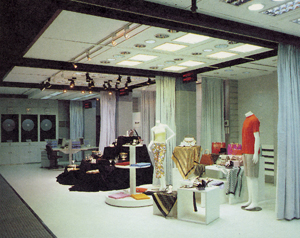
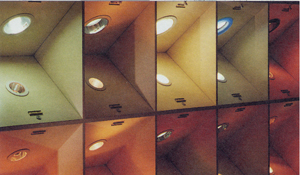
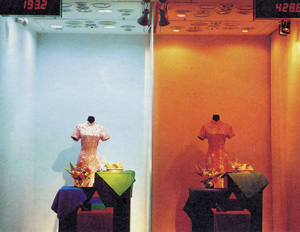
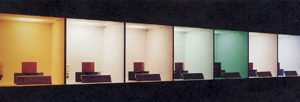
The rags-to-riches story of Keen Hsu, chairman of lighting manufacturing conglomerate Bright International Group Ltd., is the stuff of inspirational speeches and movies.
Some 35 years ago, Hsu as usual dug ditches as an impoverished 18-year-old. The heat of the day forced Hsu to think ahead, realizing that he had to take up more ambitious livelihoods or face a life of misery and poverty. So he began saving money for night school to acquire a senior high diploma.
Unfortunately Hsu dropped out after one year in an electrical engineering program due to poverty, after which he began working in a household appliance shop.
By 1983 and with a meager NT$120,000 (US$3,750) he had saved as start-up capital, Hsu opened his own business by employing only eight workers. The rest is history as the cliché goes and by the end of 2009, Hsu’s HK-listed business generated total revenue of around 2.5 billion Chinese yuan (US$367 million), with over 3,000 employees working in factories across some 186,000 square meters.
Hsu’s upbringing also mirrors the stereotypical, heart-rending, die-hard Hakka farming family in rural Hsinchu, Taiwan. Born the youngest of a family of eight, Hsu was mired in hand-to-mouth living. “We still burned kerosene lamps when I was in the third year of junior high,” Hsu recalls.
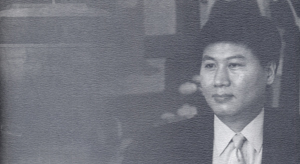
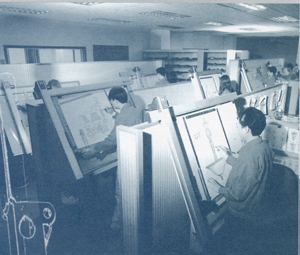
Heart-breaking Beginnings
To make ends meet, Hsu, besides digging ditches, was also a street vendor and slept often in the Taipei New Park, now the 228 Peace Memorial Park. But it was more than the Hakka spirit that fueled Hsu’s ambition through senior high, during which he also aspired to own one day a Mercedes shown in a poster hung in his room.
Revealing the truth behind his success, Hsu says that serendipity prevailed over foresighted planning: “It was a windfall in a way.” Initially Hsu focused on sensor switches for lighting fixtures and designed a garden light to go with the switches. “The lighting fixture turned out to be much more popular than the switches, so naturally I dove into lighting fixture manufacturing.” This “light of inspiration” is still being produced, with the prototype on display at the entrance of the company’s lighting museum near its factory in Humen, Guangdong province.
In 1989 and forced by rising costs, Hsu flew to China to evaluate possibly greener pastures. Instead of returning with plans to relocate business to China immediately, Hsu acquired an outdoor-lighting order from a state-run lighting firm.
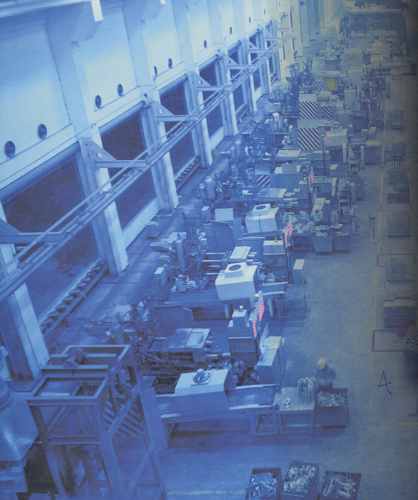
Important Education
The order was more significant an education than short-term gains, for Hsu earned the opportunity to learn how a state-run firm does business and the quality standards. The lesson convinced Hsu that he needed to computerize corporate purchasing, inventory, finance and marketing to continue doing business with China.
Three years later, Hsu decided on locating his operations in Humen despite the relative backwardness of the city. “This township is the geographical center in the Pearl River Delta, within an hour to Macau, Shenzhen, Huizhou, Guangzhou and Hong Kong airport. Also land here is far cheaper than first-tier cities like Shenzhen, which is dominated by Hong Kong merchants,” he says.
Bright has doubled its investment pace in China after opening the Humen factory. In 1996, the second factory on 8,452 square meters was opened near its first factory. Five years later, Bright acquired a commercial-lighting factory in Jiading District of Shanghai, becoming an all-round lighting manufacturer with the two home-lighting factories in Humen. “We acquired the factory simply for profitability. Commercial lighting typically lasts four to five years, compared with 12 years for home lighting,” Hsu says.
Adjusting marketing strategy after the factory acquisition, Hsu began to not only prioritize the China market over overseas counterparts, but also started to build brands. Branding home lighting products with the “Bright Your Home” label, Hsu uses the “Bright” label for its commercial products. Apparently foresighted, Hsu pondered even 20 years ago while visiting first-time China that the market would grow rapidly in speed and scale, and any savvy operator should be there,” Hsu says.
Again very candid, Hsu concedes that starting up in China has not been a picnic, having been in the red for six years until two years ago. “Bright now sets prices in the market rather than being led. And we license only one dealer or one franchisee in each market,” he says firmly.
Effective Logistics
Attributing the turnaround to mostly an effective logistics system and product-development capability, Hsu says: “For instance, we assure delivery within four hours in Shanghai. Our well-developed logistics network and systematic inventory management enable such efficiency.” Bright has set up logistics warehouses in Shanghai, Beijing, Chengdo and Tongguan, with “Bright Your Home” labeled lights being sold in 262 retailers across China.
Bright introduces around 2,600 new products for public places, engineering projects, commercial buildings and homes yearly, as well as turning out over 10,000 products in the factories, says Hsu. Sam Su, Bright’s factory manager, says that corporate R&D spending accounts for 2-3% of annual revenue. “We have over 250 patents in China for exterior design, functionality and structure,” Su says.
One ingenious example of the company’s design capacity is the patented foldable lampshade for do-it-yourself (DIY) consumers, with the metal-skeletons inside the shade being fully collapsible. “The idea was to reduce freightage. A collapsible shape allows more pieces to be loaded into a container,” Hsu explains.
Even being tough on copycats to safeguard partners’ bottom-line, Hsu says adamantly that dealers’ ability to generate reasonable profits hinges on offering products with unique features.
Impressive Design Center
With a team of skilled designers and well-equipped inspection laboratory, Bright has little trouble developing industry-leading products. Its designers work in a tightly guarded building in the factory I, hatching out new products on large drafting tables. “We have around 100 design engineers in this building alone, in addition to the 20 others in our design center in the Shanghai headquarters,” Hsu says.
Stressing that both centers are not only staffed by dedicated designers, Hsu says that their mission is also to focus on energy-efficiency, meaning to achieve maximum lumen-per-watt. Literally shedding new light on the issue, Hsu says that urban lighting designers bear the wrong mindset: to maximize illumination. “I was aghast that no lighting manufacturer educates people about energy efficiency. Worse still that many lighting designers are ignorant about energy-efficient products; so, our design centers fill such gap,” says Hsu.
Truly more than a lighting maker, Bright has inside the two design centers lighting application sites, where various lighting applications are set up and performance data recorded. “We also design and plan lighting applications,” Hsu stresses.
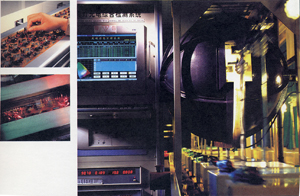
Foreign Input
Bright has also worked with foreign counterparts in new lighting design, including Duncan & Miller R. Scott Boyd of the United States; the Puget Sound Christian College-trained Japanese designer Norihito Kishimoto, and Pierce Paxton Design Studio Founder Karyl Pierce Paxton. Hsu says that Bright’s lighting products are used in many luxury hotels in Las Vegas and the Burj Al Arab.
One more claim-to-fame: Bright’s laboratory at its factory I, Hsu says, is the only privately-held Underwriters Laboratories certified lab in China, properly equipped with all the requisite instruments to test for dust-proofing, salt spray, temperature, ultraviolet, moisture, durability etc. “We invest in such testing equipment to satisfy customers’ need for peace-of-mind and quality, which also shows our dedication,” Hsu stresses.
Bright also meets other world-class standards as TUV and GS of Germany, EMC and CE of European Union, CSA and CUL of Canada, S SEMKO of Sweden, N NEMKO of Norway and 3C of mainland China.
The maker became ISO9002 certified in 1996, reportedly China’s first lighting manufacturer to do so, as well as, seven years later, ISO14000 certified that shows its eco-friendly qualifications.
Integrating Production
Boosting efficiency has also helped to sustain success and competitiveness. Bright adopted enterprise resource planning (ERP) management in 2000 and has steadily integrated manufacturing. In 2002, the company acquired high-precision machine tools to start a tooling department, as well as opened an inspection laboratory and acquired a light-source factory to start its light-source operation. It has also equipped itself with automated aluminum die-casting lines to make outdoor lighting fixtures and commercial lighting. Repeating a truism, Sam Su says that integrating production can help cut costs and achieve more consistent product quality. Bright clearly believes in transparency, Su cruises in a golf cart as he takes visitors on factory tours.
With its marketing network growing equally fast, Bright in 2003 acquired the Seattle-based lighting company Eliance Group Inc. and its factory in Mexico. The maker has around 5,000 outlets worldwide. Outside China, Bright sells 97% of its products on the ODM basis and 3% on the OEM basis. “Bright always creates value that is shared with franchisees and dealers. For instance, we collect, analyze and share product information so our customers know which products are popular and otherwise,” Hsu says.
The global downturn has not hit Bright as hard as it could have, Hsu says, “because we started rolling out low-priced products for budget buyers before the meltdown, which also attracted other buyers who wanted to save money.”

